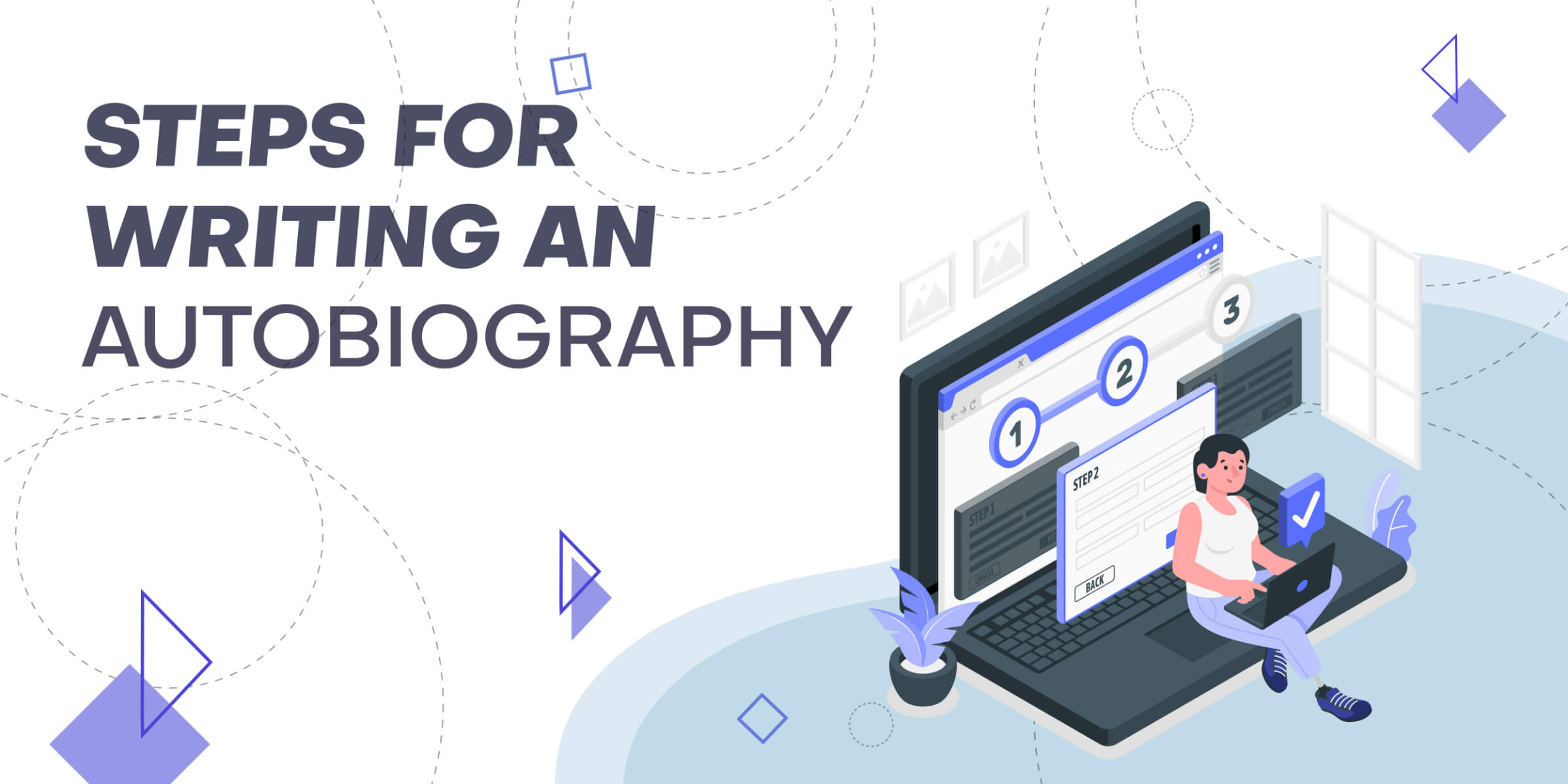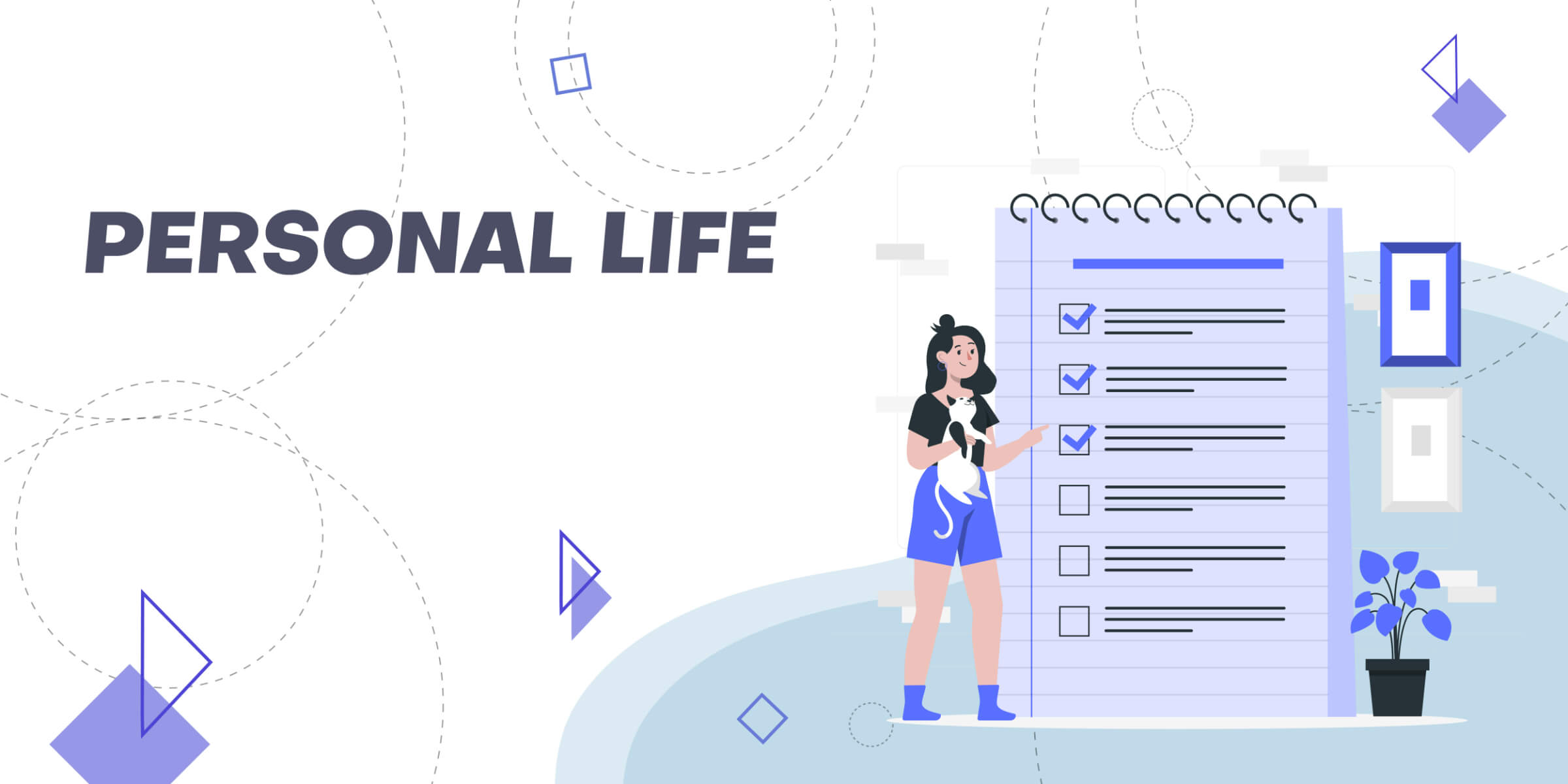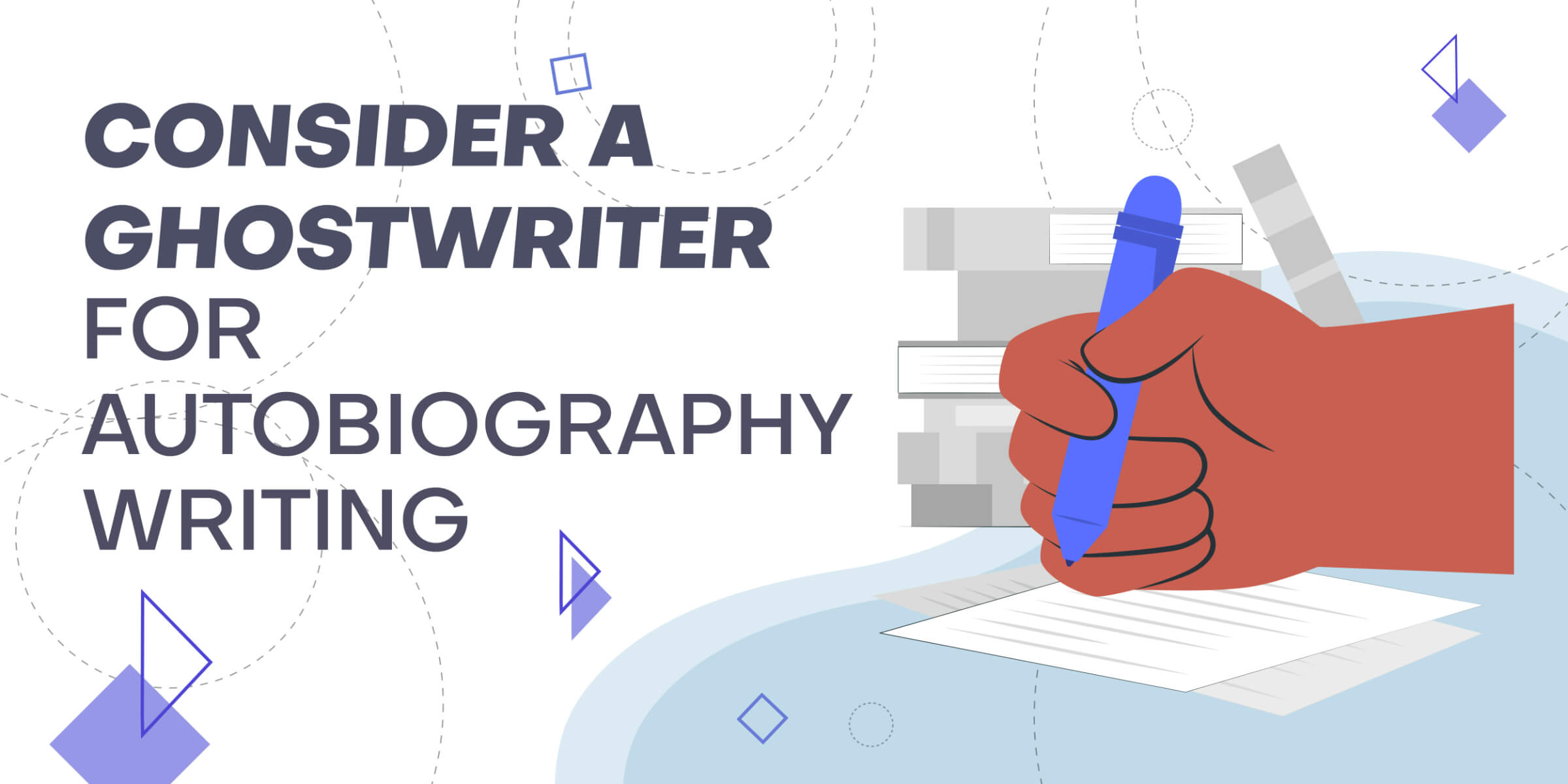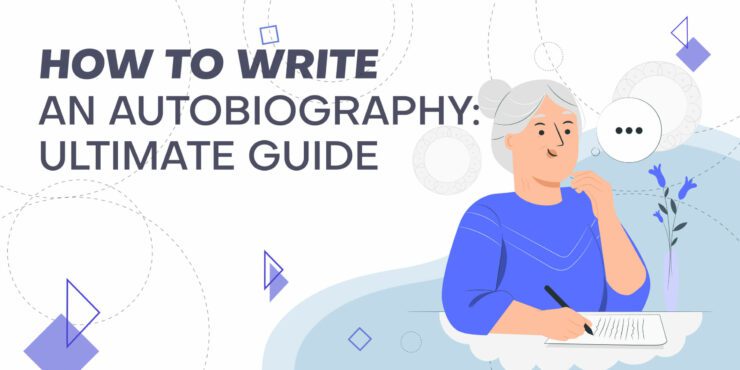If you want to learn how to write an autobiography, you’re in the right place.
Like biographies, writing an autobiography involves more than just listing the events of your life; it's about reflecting on your experiences and sharing them in a way that's engaging and meaningful. Unlike biographies, you’re the one telling your story, not someone else writing about you.
I won’t lie: this process can feel daunting at first. That’s true of any project that’s worth doing. But with the right approach, passing on your legacy to others can feel incredibly fulfilling.
As a writer and editor, I’m here to give you straightforward advice on how to tackle your passion project. From organizing your thoughts to finding your voice, I'll walk you through each step of writing your autobiography and help you ensure your story is not only told but felt by your readers.
Let's start with the basics and move forward from there.
Our Book Ghostwriting Service



- A proven track record of satisfied clients - (check out some testimonials)
- Will write autobiographies, biographies, business books, blogs, newsletters, and more.
- Professional audiobook recording and translation are available
- Our approach covers the entire process, from planning to launch.
We offer this website completely free to our visitors. To help pay the bills, we’ll often (but not always) set up affiliate relationships with the top providers after selecting our favorites. However, we do our best not to let this impact our choices. There are plenty of high-paying companies we’ve turned down because we didn’t like their product.
An added benefit of our relationships is that we always try to negotiate exclusive discounts for our visitors.
What Is an Autobiography?


An autobiography is a self-penned narrative that intricately maps the trajectory of your life. It takes into account your personal journey with a broader historical and cultural context, which offers your readers a reflective and in-depth exploration of your experiences.
Naturally, autobiographies are often confused with biographies and memoirs. Here’s a quick guide to how to tell them apart.
Feature | Autobiography | Biography | Memoir |
|---|---|---|---|
| Authorship | |||
| Perspective | |||
| Scope | |||
| Focus | |||
| Content | |||
| Intent |
Now, that you know exactly what an autobiography is (and isn’t), let’s look at a few areas that will help you make your autobiography effective.
- Craft. Maintain an authentic narrative voice, carefully balance the structure between chronology and thematic reflections, and provide vivid descriptions.
- Be introspective. Openly examine your motivations, challenges, and growth.
- Be authentic. Present your achievements and setbacks with honesty.
Steps for Writing an Autobiography


I don’t know about you, but I have to have a list for everything, including writing. I should say “especially writing” because it is truly such a large undertaking. I know how intimidating and overwhelming it can feel without a battle plan.
To help take away some of that stress, I’ve compiled a list of every step you’ll need to take in your autobiographical writing journey.
Planning


As a discovery writer (a.k.a. panster), I know how fun it can be to just jump into the deep end of your book. Let me caution you against that, especially for autobiographies. You want a plan. Here’s how to set yourself up for a lot less editing down the road:
- Define Your Purpose: Start by clarifying why you're writing your autobiography. Understanding your motivations will guide your narrative and help you connect with your intended audience.
- Identify Your Audience: Determine who you're writing for. Is it family, friends, the general public, or perhaps a specific group with shared interests? Knowing your audience influences your tone, content, and the level of detail. It’s one of the first things I ask any author.
- Create a Timeline: Outline the key events in your life, from birth to the present (or until the point you wish to conclude your story). This timeline serves as a skeleton for your narrative structure.
- Select Key Themes: Reflect on the overarching themes or lessons that have emerged throughout your life. Focusing on these themes can help you decide which stories and events are most important to include.
- Gather Materials: Compile diaries, letters, photographs, and other documents that can jog your memory and enrich your narrative with details.
- Choose a Narrative Style: Decide how you want to tell your story. Will it be strictly chronological, or will you interweave themes and time periods? Consider also whether you'll adopt a formal or informal tone.
- Draft an Outline: Based on your timeline, themes, and narrative style, create a detailed outline. This will serve as a roadmap for your writing, helping you to organize your thoughts and ensure a coherent flow.
- Set Writing Goals: Establish a regular writing schedule and set realistic goals. Whether it's a certain number of words per day or a chapter per week, consistency is key to progress.
Writing


Now that you have your plan, it’s time to sit down and put pen to paper or fingers to keyboard. Below, I’ve given you a list of things that you definitely want to try and hit as you’re writing and reliving your experiences through your writing.
If it looks like a lot of balls to juggle, that’s because it is. No worries! You’re studying up on craft beforehand so that you can be prepared. That’s why you’re here. And the good news is that most of these areas can be added to your outline. (Plus, editing is around the corner, so you can catch what you missed then.)
You can think ahead of time about the background information, like culture, world or local events, etc., you want to include and the details surrounding those items, you can preplan which people (a.k.a. characters) you will interact with in your autobiography and nail down their mannerisms or descriptions, or you can plan out what you plan out your reflections or what you learned for these events.
Having that detailed outline will help you stay focused as you move into the writing stage. You’ll be less likely to forget details, and it will help you get into the right mindset as you get carried away with the actual writing.
- Opening with Impact: Begin with a moment, memory, or reflection that captures the essence of your story. This could be a pivotal event or an insight that sets the tone for your narrative. Your opening should hook the reader with its authenticity and hint at the themes you'll explore.
- Crafting Your Narrative Foundation: Establish the context of your life by touching on background details such as place, culture, and key influences. Here, authenticity combines with detailed storytelling to provide a backdrop for your journey. It's not just about listing facts but painting a picture of the world you came from.
- Weaving in Significant Events: Identify and describe the events and experiences that have significantly shaped you. Use detailed storytelling to bring these moments to life, ensuring each scene is infused with emotional depth. How these events impacted you, what you learned, and how they changed your path are crucial aspects to delve into.
- Integrating Reflections and Insights: Throughout your narrative, pause to reflect on the impact of these events and the insights you've gained. This is where the depth of your autobiography deepens, inviting readers to connect with you on a more personal level. Your reflections should underscore the themes of your life and the growth you've experienced.
- Concluding with Meaning: As you approach the end of your story, consider how the various threads of your life weave together to form the person you are today. The conclusion should offer a reflective recap that highlights your key learnings and how you've evolved. It's also a place to look forward, perhaps sharing your hopes or intentions based on the journey you've described.
Writing Tools


New writers always ask me about writing tools or platforms, and I love to talk about gadgets. (Thanks, Dad.) Having the right writing platform can make your life so much easier. So, let’s explore my favorite and some popular options.
- Scrivener. To say that this single program changed the execution of my writing is an understatement. I absolutely love this program. Here’s why: organization and mobility. One Scrivener file contains not only your manuscript but also all of your research and planning. I no longer have to manage a bunch of folders and hope I put things in the right place. I just load up PDFs, webpages, image, notes, character and setting sheets, etc., into my manuscript’s file, and I will have easy access to it as I’m writing (literally have it up on an adjacent Scrivener window).
I can also write from my phone, iPad, or laptop because it all syncs via Dropbox. As a full-time working mom, I’ve got to fit writing in wherever I am, so mobility is a huge boon for me.
I will be honest: it does take a bit of a learning curve to use it. But once you’ve watched a few YouTube videos and toyed around with it during the free 30-day trial (that’s 30 days of usage, not 30 calendar days), you won’t have any problems.
- Microsoft Word. Everyone has used Word at some point by now. It will definitely get the job done. Personally, I don’t use it while I’m writing, but I do use it for the final stages of editing (we’ll cover this in a minute). A lot of writers who use it as their writing tool. They typically have an organizational system in place already, meaning folders for research and character and setting information.
For the writing stage, I’m not a fan because as your manuscript lengthens, you start to get a mega file, or you have several individual chapters in a folder you create. It becomes unwieldy. Developmental editing (early-stage editing) becomes a nightmare in Word because you can’t move or renumber your chapters easily. Again, doing line editing or copy editing with Word is a fabulous experience, better than even Scrivener. Lesson: apply the right tool to the right task.
- Google Docs. I know many writers, especially younger writers, use Google Docs for their writing. It’s free, mobile, and functions a lot like Word. Because it works on a website from your laptop or an app on your phone or tablet, you have a lot of freedom with where you do your writing. This is wonderful! However, Scrivener also has this capability with its desktop and mobile apps. You sync documents through Dropbox instead of Google Drive.
You still have the issue of organization, and the manuscript’s length definitely becomes an issue because of lag (worse than Word). It’s also not as robust for editing. For me, this option is my least favorite, but if you’re on a tight budget, this one will work until you can upgrade.
Key Elements of an Autobiography


Naturally, there are several key elements or sections you want to include in your autobiography. These are genre conventions, if you will. For example, if you’re reading a romance, you expect the main plot to center around a romantic relationship. If you’re reading a western, you expect horses, guns, and cowboys. What we’ll look at here are the genre conventions for autobiography and how to write them effectively.
Introduction


Your introduction is your book’s hook. It should give readers a glimpse into your autobiography’s purpose, themes, and tone. You could include things like a memorable event, a pivotal moment, or a reflection that encapsulates the essence of your life’s story.
- Engage Curiosity: Open with a sentence that grabs the reader's interest, such as a surprising fact, a poignant question, or an intriguing statement about your life.
- Invoke Emotion: Use a vivid scene or a defining moment to evoke an emotional response, connecting readers to your narrative on a personal level.
- Set the Tone: Establish the overall tone of your autobiography (e.g., inspirational, reflective, humorous) in this initial section to guide reader expectations.
- Hint at Themes: Briefly introduce the central themes or lessons of your life story, giving readers a glimpse of the journey ahead.
- Establish Connection: Aim to create an immediate rapport with your audience, making them feel invested in your story from the outset.
Early Life


Here, you’ll focus on your childhood and formative years. Readers get to know more about your background, including family dynamics, cultural influences, significant events, and early experiences that began to shape your path in life.
- Describe Your Roots: Provide details about your place of birth, family background, and cultural heritage to give readers a sense of your origins.
- Highlight Formative Experiences: Identify and describe key experiences from your early years that started to shape your personality, values, and interests.
- Introduce Influential Figures: Mention significant people (family members, teachers, mentors) who had an impact on your early life, explaining their role and influence.
- Set the Scene: Use descriptive language to recreate the settings (homes, schools, neighborhoods) of your childhood, offering a vivid backdrop to your early experiences.
- Share Milestones: Include important milestones or traditions that marked your passage through early childhood into adolescence, reflecting on how these shaped you.
- Reveal Early Challenges and Joys: Discuss any early challenges you faced or particular joys that stand out, providing insight into the complexities of your upbringing.
Education and Career


This section allows readers to delve into the author's educational journey, career choices, achievements, and challenges. It can provide insight into how your ambitions, values, and contributions developed in your personal world.
- Outline Educational Journey: Chart the course of your education, from significant early learning experiences through higher education, if applicable, noting how these experiences influenced your path.
- Discuss Career Choices: Detail how you chose your career(s), including pivotal moments, influences, and motivations behind your professional decisions.
- Highlight Key Achievements: Identify major accomplishments, breakthroughs, and recognitions in your career, emphasizing their impact on your personal and professional growth.
- Reflect on Challenges and Setbacks: Share the hurdles you've encountered along your career path, how you addressed them, and the lessons learned from these experiences.
- Include Influential Colleagues and Mentors: Mention individuals who have significantly influenced your professional life, offering examples of their impact or guidance.
- Analyze Growth and Development: Look back on how your career has evolved over time, discussing key turning points and how your goals and aspirations have shifted.
Personal Life


This aspect of your autobiography offers an intimate look at your personal experiences in relationships, family life, and interests. It can reveal the impact of your significant others had on your journey and reflect on moments that caused you to grow and change.
- Share Significant Relationships: Discuss the relationships that have played a pivotal role in your life, such as with family, friends, and partners, highlighting how these connections have influenced you.
- Narrate Life-Changing Events: Detail personal events outside of your professional achievements, such as marriage, parenthood, or other milestones, and their impact on your life perspective and choices.
- Reflect on Personal Challenges: Open up about personal struggles or challenges you've faced, showing how they've shaped your character and resilience.
- Discuss Hobbies and Passions: Introduce hobbies, interests, and passions that enrich your life, explaining how these activities reflect your personality or have provided a counterbalance to your professional life.
- Illustrate Daily Life: Give readers a glimpse into your everyday life, possibly including routines, traditions, or personal philosophies that guide your day-to-day decisions.
- Express Values and Beliefs: Share the core values and beliefs that have been crucial to your personal development, detailing how these principles have guided your actions and decisions.
Major Life Events and Turning Points


It goes without saying that this section is critical for illustrating the forces that significantly influenced your life. It covers successes, failures, crises, and revelations that contributed to your identity and worldview.
- Identify Pivotal Moments: List the critical events that significantly altered your life's direction or your understanding of yourself, such as career changes, personal epiphanies, or impactful travels.
- Describe the Circumstances: For each event, provide context about what led up to these moments and why they were transformative, offering a before-and-after perspective.
- Detail the Impact: Explain how these turning points changed your path, beliefs, or relationships, emphasizing the immediate and long-term effects on your life.
- Reflect on Lessons Learned and Changes in Perspective: Share the insights and wisdom gained from navigating these major life events, highlighting how they contributed to your personal growth and changed your worldview, priorities, or goals.
- Discuss the Role of Others: Mention any individuals who played a significant role during these turning points, whether as catalysts, supporters, or adversaries, and their influence on the outcomes.
Reflections and Lessons Learned


This area is exactly how it sounds: a reflection on what you’ve learned in life. Here are a few ways you can flesh out this section:
- Synthesize Key Insights: Summarize the core lessons learned throughout your life, drawing connections between different experiences and the wisdom they've imparted.
- Share Personal Growth: Discuss how you've evolved as a person, including changes in your values, beliefs, and understanding of yourself and others.
- Reflect on Regrets and Triumphs: Openly consider any regrets or what you might have done differently, alongside celebrating your triumphs and how they've shaped your journey.
- Offer Advice to Readers: Based on your experiences, provide advice or guidance that readers might apply to their own lives, aiming to inspire or offer solace.
- Highlight Enduring Questions: Mention any lingering questions or curiosities you have about life, suggesting areas of continued exploration or reflection.
- Contemplate the Future: While reflecting on the past, briefly look forward to your aspirations, hopes, and the legacy you wish to leave, connecting past lessons to future possibilities.
Conclusion and Looking Forward


How you close out your autobiography is as important as how you open it in your introduction. Consider what image or scene you want to leave your readers with. Below are some of the areas you’ll want to cover in your final chapters.
- Summarize Your Journey: Concisely recap the pivotal moments and themes of your life story, highlighting how they've woven together to form the tapestry of your experiences.
- Reflect on the Present: Share your current state of mind, how you view your past from today’s perspective, and the values and insights that guide your life now.
- Express Gratitude: Acknowledge the people, experiences, and lessons that have enriched your life, offering thanks for the growth and understanding they've provided.
- Articulate Future Aspirations: Discuss your hopes, dreams, and what you still wish to achieve or experience, showing that your journey continues beyond the pages of your autobiography.
- Leave a Message for the Future: Offer words of wisdom or a message to future generations, encapsulating your hopes for them based on the lessons learned from your life.
- Close with Optimism: End on a positive note, emphasizing resilience, hope, and the potential for ongoing growth and discovery, inviting readers to reflect on their own lives with a sense of possibility and anticipation.
Literary Techniques and Styles


In crafting your autobiography, you can utilize a variety of literary forms and styles, each bringing a unique flavor to your storytelling and influencing reader engagement in distinct ways:
Style | Description | Impact |
|---|---|---|
| Traditional Narrative | ||
| Memoir | ||
| Diary Format | ||
| Epistolary Style | ||
| Vignettes | ||
| Thematic Organization | ||
| Mixed Media |
Edit and Refine


Once you’ve completed the first draft of your autobiography, it’s time to start editing. I have several articles that detail how to organize and plan your editing and how to complete it in the most effective order. However, to get you started, here is the first article in that editing series.
To help you edit your autobiographies effectively, I’ve given you a checklist below. It will give you a quick overview of editing and revision as it pertains to autobiographies.
- Begin with Developmental Editing: Start by examining the overall structure and framework of your autobiography. Developmental editing, also known as structural editing, focuses on the organization, narrative flow, and the development of themes and arcs. This stage ensures your story unfolds logically and compellingly, setting a solid foundation for further refinement.
- Proceed to Substantive Editing: After addressing the broad structural concerns, move on to substantive editing, which dives into the pacing, clarity of individual sections, and the effectiveness of transitions between chapters. This type of editing fine-tunes the way your story is told, focusing on how well each part supports and enhances the narrative as a whole.
- Refine with Copyediting: With the structure and substance of your manuscript solidified, focus next on copy editing. This phase corrects grammar, punctuation, syntax, and spelling errors, ensuring the language in your autobiography is clear, correct, and effective in conveying your experiences and reflections to the reader.
- Finalize with Proofreading: The last step before considering your manuscript complete is proofreading. This final polish checks for any overlooked mistakes or inconsistencies in grammar, punctuation, and formatting, ensuring your autobiography is polished and professional.
- Seek Feedback: Throughout these editing phases, seeking feedback from trusted readers or professional editors is invaluable. Their perspectives can highlight areas that may benefit from further revision and offer insights into how your autobiography resonates with an audience.
- Consider Hiring Different Types of Editors and Their Services: Depending on your specific needs and the current state of your manuscript, you might find certain types of editing services more beneficial at different stages. Understanding the unique benefits of various editors (developmental, substantive, copy editors, and proofreaders) can help you find the right support to make your manuscript publication-ready. Reedsy is an excellent place to find reputable editors.
- Iterate for Perfection: Embrace revision and editing as an iterative process. Your autobiography may undergo several rounds of edits before it fully captures the essence of your journey. Each iteration is an opportunity to refine your narrative, ensuring it accurately reflects your experiences and engages readers with clarity and impact.
Publish Your Autobiography


Determining which publishing path you choose for your autobiography can feel a bit daunting. I had to go through the same considerations when I started writing my novels. There is no right or wrong answer here. Only what works best for you, your autobiography, and your goals. I’ll first look at an overview of the primary publishing routes and then give you some questions to consider.
Traditional Publishing
We’re all familiar with traditional publishing. It involves submitting your manuscript to established publishing houses. If accepted, they manage the editing, design, printing, distribution, and marketing aspects.
Pros | Cons | Preparation & Marketing |
|---|---|---|
| - Professional services - Broader distribution - Marketing support | - Highly competitive - Long wait times - Less control | - Polish manuscript - Compelling query/proposal - Participate in marketing efforts |
Self-Publishing
Self-publishing is gaining traction because of the difficulties surrounding traditional publishing. Self-published authors independently manage the publishing process, using platforms like Amazon's Kindle Direct Publishing, IngramSpark, or others, to release their books.
Pros | Cons | Preparation & Marketing |
|---|---|---|
| - Complete creative control - Higher royalties - Faster publication | - Time investment - Upfront costs for services - Limited distribution | Professional editing and design, social media, author websites, paid advertising. |
Hybrid Publishing
For those who want a middle ground, hybrid publishing is available. It’s a blend of traditional and self-publishing, where authors might pay for services like editing and design but receive assistance with distribution and marketing. Sometimes, there are bad actors in this sphere, so please (please) do ample research into hybrid publishers (and stay away from vanity presses). A great resource for which ones to look out for is Writer Beware.
Pros | Cons | Preparation & Marketing |
|---|---|---|
| - Professional services with more control. | - Costs can be high - Quality varies | - Select a reputable publisher - Be involved in marketing - Leverage networks |
Additional Considerations
As you can imagine, there are several considerations you’ll need to account for when dealing with this choice: distribution and marketing. These two areas have a lot of weight, so I want to call them out a bit more for you to have a fuller picture of what you’re getting into with any model.
Distribution
The distribution process is definitely something you need to understand. Below is a side-by-side comparison of the three models.
Publishing Model | Distribution Characteristics | Advantages | Challenges |
|---|---|---|---|
| Traditional Publishing | |||
| Self-Publishing | |||
| Hybrid Publishing |
Marketing
Chances are, if you’ve found DDIY, that you’re not afraid of a little bit of marketing. That’s great because each publishing model requires authors of market in some way (some more than others as you will see). How much marketing you are comfortable with will help you determine which model you favor. Below, I’ve given you a table with a list of author-centered marketing activities and which models will require you to complete that activity.
Marketing Activity | Traditional Publishing | Self-Publishing | Hybrid Publishing |
|---|---|---|---|
| Media Appearances | |||
| Book Signings & Readings | |||
| Online Presence | |||
| Author Platform | |||
| Social Media Campaigns | |||
| Email Marketing | |||
| Content Marketing | |||
| Paid Advertising | |||
| Review Outreach | |||
| Book Launch Event | |||
| Collaborative Marketing Efforts | |||
| Networking | |||
| Online Promotion | |||
| Direct Sales |
Questions To Help You Choose Your Path
Now that I’ve talked about the publishing routes available to you and how distribution and marketing affect authors in each model, I want to give you a series of questions that will help you see where you land on the two main routes of publishing: traditional vs. self-publishing. Take a few moments to work through these questions.
Personal and Professional Goals
- What are my primary reasons for writing this autobiography? Is it to share my story with a specific audience, establish my expertise, or leave a legacy?
- How do my publishing choices align with my broader personal or professional aspirations? Do I see my book as a stepping stone to other opportunities?
Control and Creative Freedom
- How important is it for me to have complete control over the content, design, and pricing of my book?
- Am I comfortable with others making decisions about my book, or do I prefer to oversee every aspect of the publishing process?
Budget and Financial Expectations
- What is my budget for publishing this book, and am I prepared to cover upfront costs associated with self-publishing?
- How do I feel about the potential financial returns of self-publishing versus traditional publishing, including royalties and advances?
Professional Support
- How much value do I place on professional editing, design, and marketing support? Do I have the skills to manage these aspects myself, or would I prefer to rely on experts?
- Am I willing and able to invest in professional services if I choose to self-publish, or do I prefer the integrated support that comes with traditional or hybrid publishing?
Consider a Ghostwriter for Autobiography Writing


Perhaps you’ve realized that you’d like to have a stronger writer take the reins or that you just don’t have the time to complete your autobiography. Those are great times to consider working with a ghostwriter. Ghostwriters are professional (paid) writers who, after signing confidentiality agreements, work with you behind the scenes to complete the writing. But you would be credited as the author.
Working on an autobiography with a ghostwriter would be a collaborative process between you and your ghostwriter. They would interview you, complete additional research, craft the actual manuscript, and revise based on feedback from you or your editor.
Here are a few signs that you should consider hiring a ghostwriter:
- Lack of Time: You have a compelling story to tell but are too busy with other commitments to dedicate the necessary time to write it yourself.
- Writing Skill Concerns: You’re unsure about your ability to write effectively and engagingly for a wide audience.
- Collaborative Preference: You like the idea of collaborating with someone who can bring fresh insights and perspectives to your story, making it more relatable and engaging for readers.
- Overwhelming Project: The idea of organizing and writing your life story feels daunting, and you're unsure where to start or how to structure your narrative.
- Emotional Distance: You find it challenging to write about personal experiences objectively or struggle to revisit emotional moments in your life.
Conclusion
You’re now ready to start planning, writing, and publishing your autobiography. I’ve no doubt that as you start putting the words down, you’ll find the process to be both therapeutic and enriching. And what’s even more amazing is that once you send it out into the world, via whichever publishing model you choose, you’ll find that readers will experience a similar impact on their own lives.
So, don’t hold your story in. Tell it and share it. Your life’s story could change someone else’s.
Our Book Ghostwriting Service



- A proven track record of satisfied clients - (check out some testimonials)
- Will write autobiographies, biographies, business books, blogs, newsletters, and more.
- Professional audiobook recording and translation are available
- Our approach covers the entire process, from planning to launch.
Frequently Asked Questions
How do I start an autobiography about myself?
Begin by reflecting on significant moments and themes in your life. Identify a compelling event or insight to serve as your opening, setting the tone for your narrative. Draft an outline to structure your story, deciding on a chronological or thematic approach to guide your writing process.
What are the steps of writing an autobiography?
Start by defining your purpose and audience. Create a timeline of key life events, select overarching themes, and gather supporting materials. Choose your narrative style, draft an outline, and embark on writing, followed by rounds of revision and editing. Finally, seek feedback and prepare for publication.
Can you write an autobiography if you’re not famous?
Yes, fame is not a requirement for writing an autobiography. Every person's life contains unique stories and insights valuable to others. An autobiography is about sharing your journey, lessons learned, and connecting with readers on a personal level.
What’s the format of an autobiography?
An autobiography typically follows a narrative format, presenting your life story in a coherent and engaging manner. It can be structured chronologically or around key themes, with an introduction that sets the tone, a detailed body recounting your experiences, and a conclusion that reflects on the journey.



















